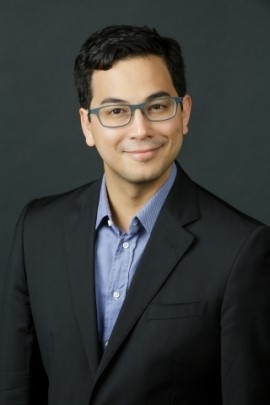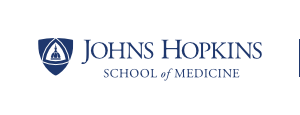JHSPH Alumni Profiles
Dr. Russell Shinohara
 Dr. Russell (Taki) Shinohara completed his PhD at the Bloomberg School of Public Health in the Department of Biostatistics in 2012. Prior to his time at Hopkins, Dr. Shinohara received his MSc in Mathematics and Statistics and his BSc in Probability and Statistics, both from McGill University. In 2012, Dr. Shinohara joined the University of Pennsylvania as an Assistant Professor in the Department of Biostatistics, Epidemiology and Informatics, where he remains currently as Associate Professor of Biostatistics.
Dr. Russell (Taki) Shinohara completed his PhD at the Bloomberg School of Public Health in the Department of Biostatistics in 2012. Prior to his time at Hopkins, Dr. Shinohara received his MSc in Mathematics and Statistics and his BSc in Probability and Statistics, both from McGill University. In 2012, Dr. Shinohara joined the University of Pennsylvania as an Assistant Professor in the Department of Biostatistics, Epidemiology and Informatics, where he remains currently as Associate Professor of Biostatistics.
My laboratory develops new methodology for studying information in biomedical images to better understand pathology, development, and the effects of treatments. I spend most of my days working with students, postdoctoral fellows, and colleagues, to build better statistical approaches for harnessing the complex information in neuroimaging studies in collaboration with clinicians and other biomedical scientists.
Transitioning from graduate student to faculty was amongst the most exciting times of my professional career. Moving from Hopkins to Penn meant entering a new collaborative world with incredible opportunities. There were also increasingly complex demands on my time as I took on new responsibilities in administrative duties as part of committees as well as classroom teaching. Through all of this, my most rewarding experiences were the opportunities to work with incredibly bright trainees, and to develop a vision for our research program.
I feel exceptionally well prepared for my career as an academic biostatistician. The JHSPH taught me many of the most important skills and perspectives that I use every day. I have also learned a great deal as a junior faculty member both in terms of day-to-day aspects of academic life such as grant and financial management of a research group, as well as in scientific areas that my research has taken me towards.
I chose academia for several reasons: first, the academic freedom and opportunity to study different aspects of medicine to improve public health. Secondly, mentoring and learning from brilliant graduate students and postdoctoral fellows is an incredible experience. I also enjoy the flexibility of scheduling my own days. I knew from early on in graduate school that this path was for me.
In my last year of graduate school, I decided to apply directly and broadly to faculty positions across North America. Having the opportunity to visit other institutions, present my work, and learn about the exciting activities that other biostatistics departments were conducting was enlightening and humbling.
In my last year of graduate school, I applied broadly to faculty positions across North America. Having the opportunity to visit other institutions, present my work, and learn about the exciting activities that other biostatistics departments were conducting was enlightening and humbling.
In the next 5 to 10 years, I’d like to grow my research program, continue to work with incredible trainees, and branch out into new areas of imaging statistics. I would also like to work with epidemiologists and other brain scientists to bring some of the biomarkers we have been developing into practice – both in research studies and the clinic.
Check out https://www.amstat.org/asa/files/pdfs/YCR-2017-2018-AcademicSalaryReport.pdf
Always trust statisticians to keep track of numbers.
Benefits differ across institutions, but at Penn we have very generous benefits ranging from health insurance to tuition support for dependents and retirement contributions.
Careers in biostatistics can be very diverse. For students interested in statistical methodology development, academia, government, and some private companies offer great environments.
The only part of my career path that had visa status or citizenship requirements was the T32 grant from NIH that funded my time at JHSPH. Penn does have services to support visa applications.
The best way to figure out if a career in academic biostatistics is the right path is to engage in it. For students in doctoral programs, their time writing their dissertations is a great representation of what an academic career is like. Postdoctoral fellowships are also excellent opportunities to learn more about the field, and experience new academic environments.
For those who are interested in academia, go for it. My experience has been incredibly rewarding and my research has taken me to areas I could never have imagined. And that’s what excites me most.
Thank you again to Dr. Russell Shinohara for his time in conducting this informational interview.
This interview was conducted by Julie Nadel, PhD, in collaboration with the Professional Development and Careers Office at the Johns Hopkins School of Medicine.
Current students: if you are interested in connecting with Dr. Shinohara or other alumni for your own career exploration, please contact: phd_recruit@jhmi.edu.
Alumni: If you are willing to be contacted by a current student for an informational interview to have a profile made about your career path, please contact: phd_recruit@jhmi.edu.
